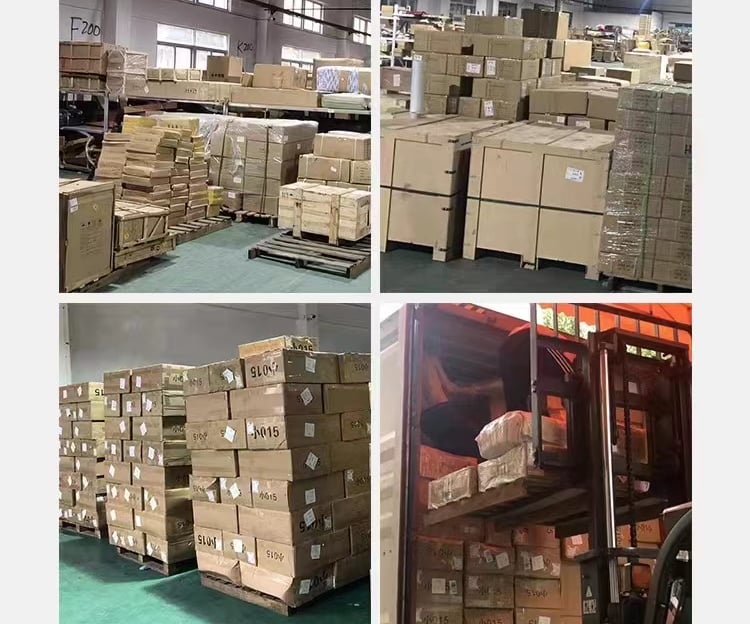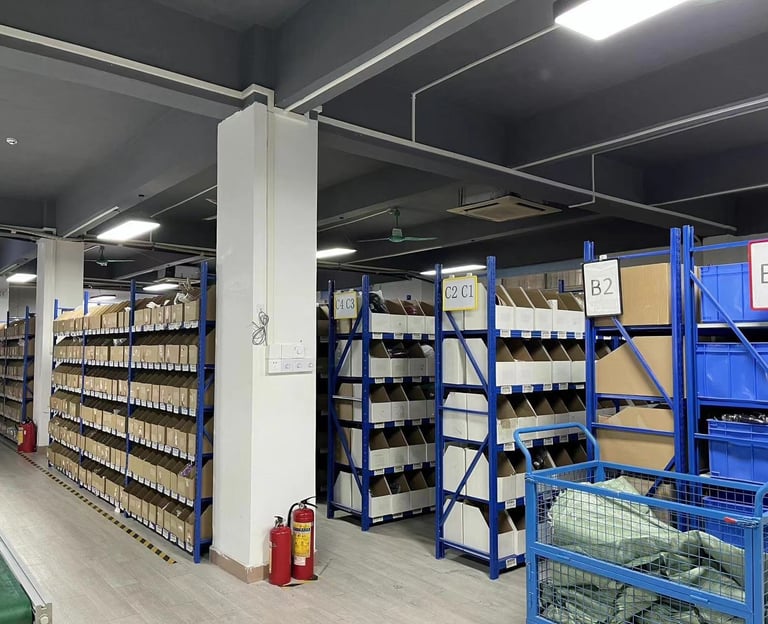Fulfillment Centers vs. Warehouses
Which One is Better?
CHINA WAREHOUSE
5/19/20245 min read


When it comes to storing and managing inventory, businesses often face the dilemma of choosing between a warehouse and a fulfillment center. Both serve distinct purposes and offer unique advantages, making the decision heavily dependent on specific business needs. In this blog, we'll delve into the differences, pros, and cons of warehouse storage services and fulfillment center operations, helping you make an informed decision that aligns with your business goals.
Warehouse Basics
What is a Warehouse?
A warehouse is a large facility used for the storage of goods. Warehouses offer long-term product storage and are designed to keep inventory safe, organized, and ready for eventual distribution. These facilities are equipped with advanced inventory monitoring technology, such as CCTV and RFID, to provide real-time inventory updates and ensure efficient management.
Types of Warehouses
Public Warehouses: Owned by the government or third parties, these are available for use by multiple businesses.
Private Warehouses: Owned and operated by private entities, often tailored to the specific needs of the company.
Bonded Warehouses: Used for storing imported goods before customs duties are paid.
Smart Warehouses: Utilize advanced technology like AI and robotics to streamline operations.
Consolidated Warehouses: Combine smaller shipments from various suppliers into one larger shipment.
Fulfillment Center Overview
What is a Fulfillment Center?
A fulfillment center, while similar in structure to a warehouse, focuses on short-term storage and rapid processing of orders. These centers are strategically located near key consumer locales to facilitate quick delivery. They are integral to the supply chain management process, providing automated order fulfillment, which includes picking, packing, and shipping products to customers.
Pros and Cons of Warehouse Storage Services
Pros
Long-Term Product Storage: Ideal for businesses needing to store products for extended periods.
Advanced Inventory Monitoring Technology: Warehouses use CCTV, RFID, and other technologies for efficient inventory management.
Flexible Storage Solutions: Suitable for businesses with varying storage needs, from small to large quantities.
Cost Efficiency: Over long-term storage, warehouses can be more cost-effective, especially public warehouses.
High Safety Standards: Warehouses typically offer robust safety measures to protect inventory.
Cons
Expensive for Short-Term Needs: Warehouses can be costly for businesses needing short-term storage solutions.
Lack of Shipping Services: Warehouses primarily focus on storage, requiring businesses to arrange separate shipping solutions.
Static Operations: Unlike fulfillment centers, warehouses are less dynamic and have lower turnover rates.
Pros and Cons of Fulfillment Center Operations
Pros
Rapid Order Fulfillment: Fulfillment centers are designed for quick processing and shipping of orders.
Cutting-Edge Technology: Utilize advanced technologies to streamline order fulfillment and ensure accuracy.
Expert-Controlled Inventory Management: Managed by professionals to optimize the order flow.
Cost-Effective for Short-Term Storage: Lower costs for short-term storage and order processing.
Enhanced Supply Chain Management: Integrate storage and shipping processes, reducing transit times and improving efficiency.
Cons
Limited Long-Term Storage: Fulfillment centers are not ideal for storing products for extended periods.
Customization Limitations: They are less flexible in terms of storage and handling custom packaging.
Higher Costs in High-Demand Periods: Costs can increase significantly during peak demand times due to limited space.
Key Differences Between Warehouses and Fulfillment Centers
Purpose
Warehouse: Primarily for long-term storage, focusing on keeping inventory safe and organized over extended periods.
Fulfillment Center: Designed for short-term storage and rapid order processing to facilitate fast delivery to customers.
Operations
Warehouse: Static operations with a focus on storing products until needed.
Fulfillment Center: Dynamic operations with high turnover rates, continuously receiving, processing, and shipping orders.
Order Frequency and Picking Processes
Warehouse: Lower frequency of orders, more focused on long-term storage and periodic shipments.
Fulfillment Center: High frequency of orders, with a streamlined picking, packing, and shipping process to handle daily order volumes.
Safety and Monitoring
Warehouse: High safety standards with comprehensive monitoring systems to protect long-term stored goods.
Fulfillment Center: While also safe, the high turnover rate can lead to occasional lapses in inventory handling.
Cost Considerations
Warehouse: More cost-effective for long-term storage, especially in public warehouses. Costs can increase with private warehouses and during peak seasons.
Fulfillment Center: More cost-effective for short-term storage and rapid order processing. Costs can rise during high-demand periods due to increased space utilization.
Business Applications
When to Use a Warehouse
Long-Term Storage Needs: Ideal for businesses that need to store products for several months or years.
Complex Inventory: Suitable for companies with large and diverse inventories requiring detailed monitoring.
Seasonal Storage: Effective for businesses with seasonal inventory cycles that require secure, long-term storage.
When to Use a Fulfillment Center
High Order Volume: Perfect for businesses with a high frequency of orders needing quick processing and shipping.
Proximity to Consumers: Best for companies wanting to store products near key customer locations to reduce shipping times.
Short-Term Storage: Suitable for businesses needing temporary storage before orders are shipped to customers.
Advanced Technologies in Warehousing and Fulfillment
RFID Technology
Both warehouses and fulfillment centers leverage RFID technology to enhance inventory tracking and management. RFID tags provide real-time updates on the location and status of inventory, improving accuracy and efficiency.
Smart Warehousing Solutions
Smart warehouses use AI and robotics to automate various processes, from inventory sorting to order picking. These technologies reduce labor costs, minimize errors, and increase overall efficiency.
API Integration
API integration plays a crucial role in both warehouses and fulfillment centers by connecting inventory management systems with e-commerce platforms. This integration ensures real-time updates and streamlines order processing, enhancing the overall supply chain management.
Cost and Efficiency
High-Demand Storage Costs
Both warehouses and fulfillment centers can experience increased costs during peak seasons due to high demand and limited space. Businesses must plan for these fluctuations to manage expenses effectively.
Business Operation Costs
Warehouse: Generally higher for long-term storage, especially with private warehouses. Public warehouses offer more affordable options but may lack space.
Fulfillment Center: More cost-effective for short-term storage and rapid order fulfillment. Businesses must balance the cost of fast shipping with the need for efficient inventory turnover.
Reimbursement Policies for Product Damages
Both warehouses and fulfillment centers should have clear reimbursement policies for product damages. This ensures businesses are compensated for losses due to mishandling or storage issues.
Conclusion
Choosing between a warehouse and a fulfillment center depends on various factors, including your storage needs, order volume, and proximity to customers. Warehouses are ideal for long-term storage and complex inventory management, while fulfillment centers excel in rapid order processing and short-term storage. By understanding the unique advantages and limitations of each option, you can make an informed decision that aligns with your business goals and enhances your overall supply chain efficiency.
Whether you need the long-term stability of a warehouse or the dynamic capabilities of a fulfillment center, each option offers distinct benefits that can support your business's growth and operational efficiency. Evaluate your specific needs, consider the pros and cons, and choose the solution that best meets your business requirements.


